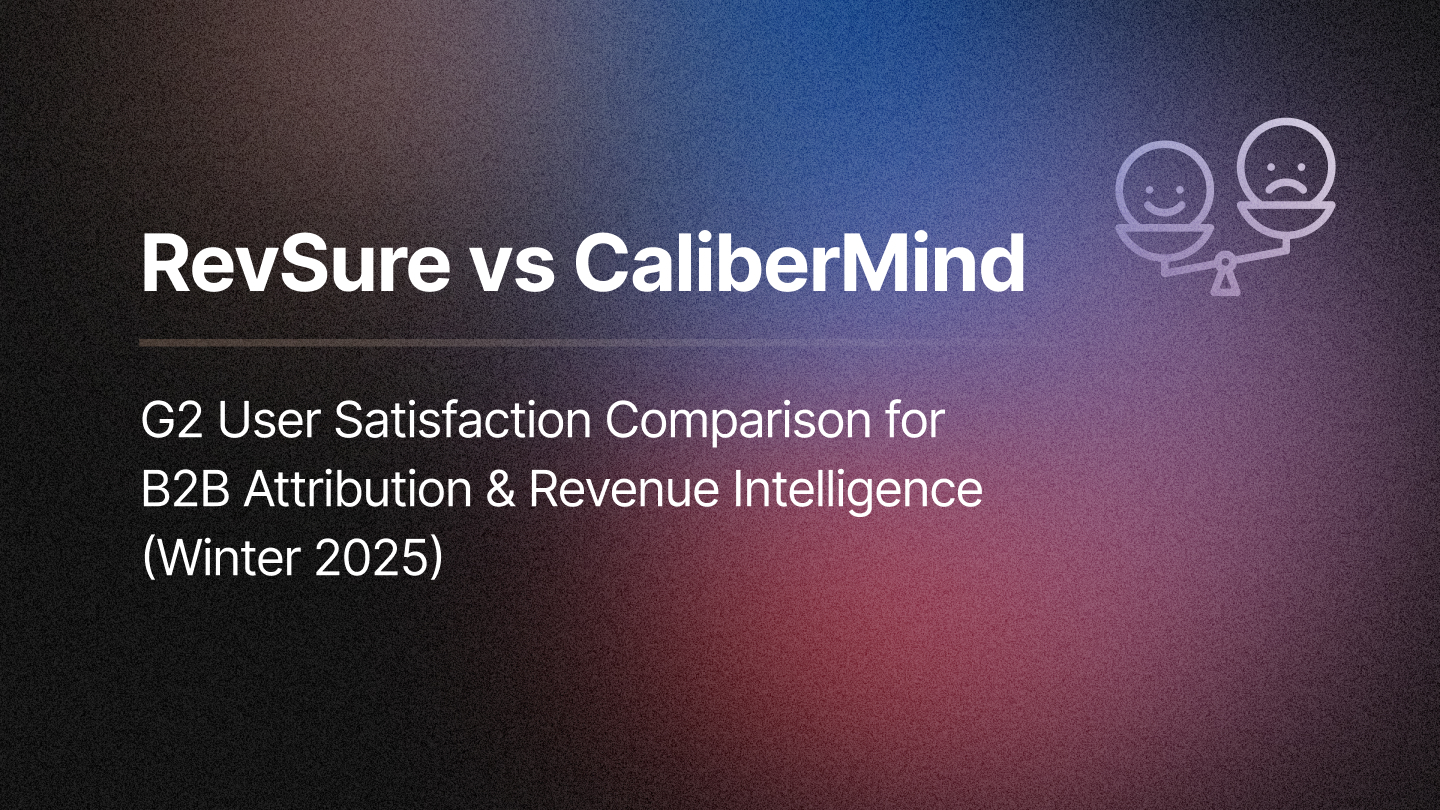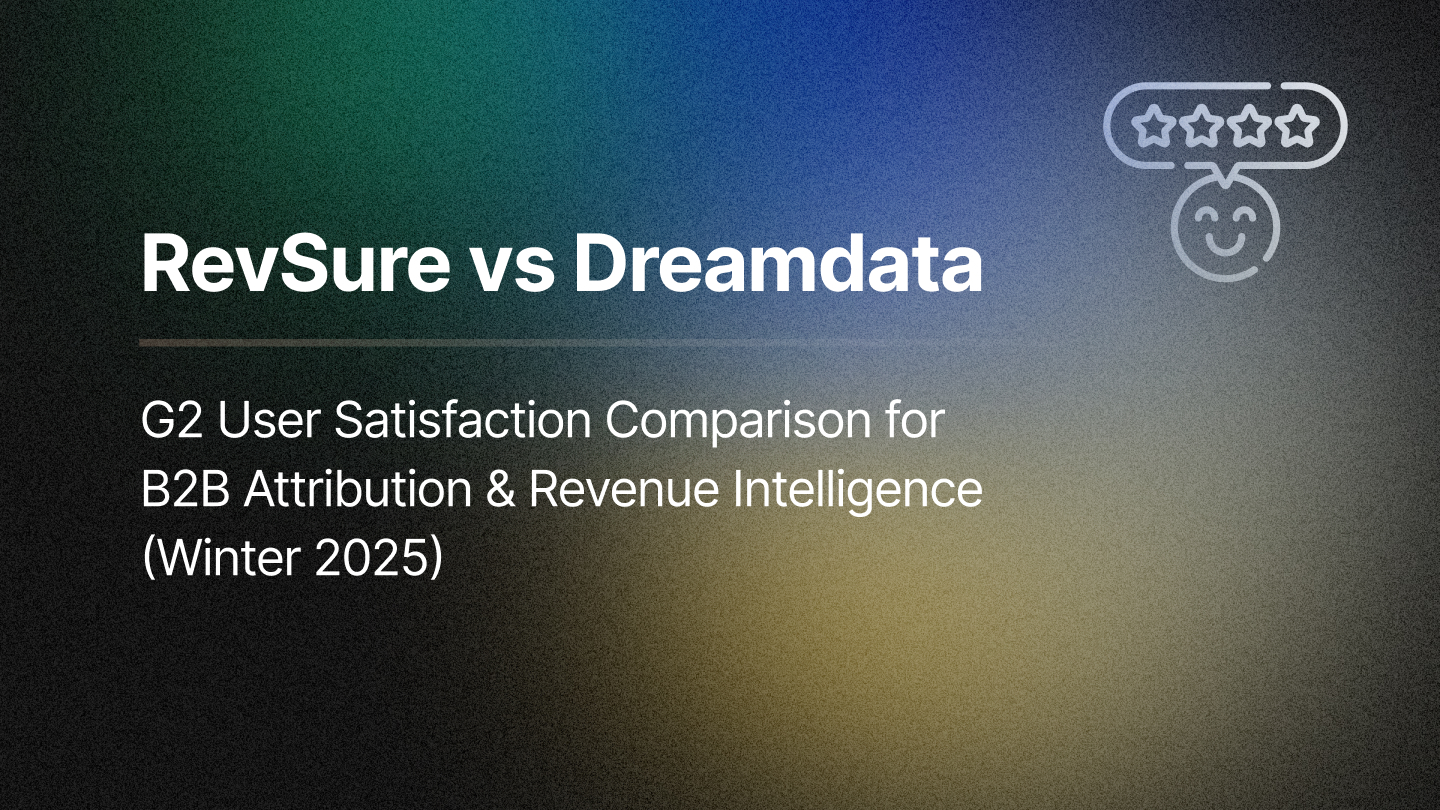Marketing Operations (MarketingOps) leaders today face more scrutiny than ever. CEOs and CFOs expect marketing to drive revenue – not just generate leads – and they demand clear proof of return on every marketing dollar. According to recent research, 84% of marketing professionals are under pressure to prove marketing ROI to justify their budgets, yet over 60% of senior marketers still struggle to demonstrate that ROI in practice. The stakes are high: failing to show tangible results can lead to budget cuts and diminished credibility for the marketing team.
For MarketingOps leaders, this mandate to prove ROI can feel like a major headache. They are tasked with translating a complex mix of campaigns, channels, and customer touchpoints into a clear business outcome. In theory, it sounds straightforward – track what marketing spends and what it generates. In reality, proving marketing ROI is difficult due to several persistent challenges. Siloed data, fragmented systems, and long B2B sales cycles can obscure the real impact of marketing efforts.
Before diving into solutions, let’s unpack the key challenges that make ROI proof so challenging for MarketingOps.
Challenges in Proving Marketing ROI for MarketingOps
Even the most savvy MarketingOps teams encounter obstacles when trying to connect marketing activities to revenue. Some of the biggest challenges include:
- Data Siloes and Disconnected Systems: Marketing data often lives in separate tools – your CRM, marketing automation platform, ad networks, web analytics, and so on. These disconnected systems make it hard to get a unified view of performance. In fact, the average marketing team uses plenty of analytics tools, yet most struggle to reliably track ROI across them. Data silos mean manual exporting to spreadsheets and fragmented insights, which is time-consuming and error-prone.
- Long Sales Cycles and Attribution Complexity: In B2B marketing, ROI isn’t instant. Sales cycles can stretch for months and involve multiple stakeholders and touchpoints. A lead might download an eBook today but not become a closed-won deal until 6 or 12 months (and many marketing touches) later. These long attribution windows make it hard to tie revenue back to any single campaign. Yet many companies still try to measure success in short bursts. Studies show that while an average B2B sales cycle is around 6+ months, only 4% of marketers measure ROI over a period longer than 6 months – meaning most marketers aren’t capturing the full long-term impact. Multi-touch B2B marketing attribution is inherently complex, and without the right model, marketing’s true contribution can be underestimated.
- Manual Reporting and Inconsistent Metrics: Without the proper infrastructure, proving ROI often requires cobbling together reports from multiple sources. MarketingOps leaders can end up spending hours building pivot tables and tweaking formulas. This manual reporting is not only a headache; it’s also prone to inconsistencies. Different teams might define metrics differently (e.g. what counts as “marketing-sourced pipeline” or which costs are included in ROI), leading to confusion and misalignment. It’s not uncommon for marketing, sales, and finance to lack agreement on how ROI is calculated. Such inconsistencies make it even harder to defend marketing’s impact in front of executive leadership.
These challenges can leave MarketingOps leaders feeling like they’re fighting an uphill battle. But with the right approach, you can overcome these hurdles. In the next section, we’ll explore strategies and best practices to prove marketing ROI more easily and accurately – without the usual headaches.
Strategies to Overcome ROI Measurement Challenges
Proving ROI in marketing is difficult, but it’s far from impossible. Leading MarketingOps teams are finding success by adopting a smarter approach in three key areas: technology, process, and collaboration. Here are some strategies and best practices to tackle the ROI challenge:
- Adopt Unified MarketingOps Analytics Technology: The foundation for proving ROI is having the right data at your fingertips. Invest in tools that unify your data across the entire funnel, from first touch to closed deals. A centralized MarketingOps analytics platform (often part of a broader Revenue Operations stack) can pull in data from your CRM, marketing automation, ad platforms, and more – eliminating data silos. This gives you a single source of truth for marketing performance. Look for solutions that offer real-time dashboards and MarketingOps analytics capabilities, so you can track KPIs and attribution on the fly. Advanced platforms even use AI to automate data cleaning and highlight trends.
- Standardize Processes and Define Clear Metrics: Technology alone isn’t enough; you also need disciplined processes. Start by establishing consistent definitions for each stage of your funnel and ROI metric. Ensure everyone agrees on what counts as a Marketing Qualified Lead (MQL), how pipeline attribution is assigned (e.g. first-touch, last-touch, or multi-touch models), and how marketing-sourced revenue is calculated. By standardizing these definitions, you prevent the confusion of multiple versions of “truth.” Implement a clear B2B marketing attribution model that fits your sales cycle (for many, a multi-touch model gives a more accurate picture than a last-click model). Document these processes and educate your team, as well as stakeholders in sales and finance, about how marketing ROI is measured.
- Collaborate and Align with Sales and Finance: Proving ROI is a team sport. Marketing’s numbers will be scrutinized by sales leadership, the finance team, and others, so it’s critical to align goals and metrics upfront. Collaborate with sales to agree on pipeline targets and what portion marketing will contribute (often called revenue marketing alignment). Work with finance to validate the ROI formulas and assumptions you use – for example, make sure the way you calculate customer lifetime value or campaign costs matches what finance expects. Regular cross-functional meetings can help keep everyone on the same page. When MarketingOps, SalesOps/RevOps, and Finance speak a common language of ROI, it builds trust in the data. This collaboration also means marketing can get credit for influenced deals, not just sourced deals, as long as all parties agree on how to attribute influence. Ultimately, a culture of transparency and shared revenue marketing goals will make it far easier to demonstrate marketing’s impact. When the CMO and CFO present to the board, there are no surprises – just one agreed-upon story of how marketing is driving growth.
By focusing on these areas – integrating the right tech, tightening your processes, and forging strong alignment – MarketingOps leaders can significantly reduce the pain of proving ROI. You’ll move from scrambling through spreadsheets to delivering insights proactively.
Next, let’s look at how these best practices come to life with the help of a modern solution designed for this very purpose, and how it can drastically cut down the effort required to show marketing’s value.
How RevSure Helps MarketingOps Leaders Prove ROI (Without the Headache)
One of the most powerful ways to simplify ROI proof is to leverage technology purpose-built for revenue marketing analytics. RevSure is an example of a platform that helps MarketingOps leaders bridge the gap between marketing activity and revenue impact, with far less hassle. By using AI and unified data, RevSure delivers on the core needs of MarketingOps when it comes to ROI measurement. Here’s how RevSure helps marketing teams prove marketing ROI more efficiently:
- Full Pipeline Visibility: RevSure connects your demand generation funnel to real sales outcomes, giving you end-to-end visibility into how leads progress into pipeline and revenue. All those formerly siloed data sources are integrated into one view. This means a MarketingOps leader can quickly see, for example, how a webinar in Q1 influenced the pipeline in Q2 or Q3, without hunting through multiple systems. Pipeline visibility is crucial for understanding true ROI, and RevSure provides it by unifying data across marketing and sales. No more guessing which leads turned into opportunities – you can track it directly and attribute pipeline confidence to marketing efforts.
- In-Depth Funnel Insights: Beyond just pipeline numbers, RevSure offers rich funnel insights at every stage. You can analyze conversion rates from MQL to SQL to closed deals, broken down by campaign, channel, or segment. This helps identify which marketing programs are truly revenue drivers. For instance, you might discover that one content syndication partner produces opportunities that convert to revenue 2x faster than others – insight you can only get with full-funnel analytics. RevSure’s MarketingOps analytics capabilities make it easy to pinpoint these trends. By measuring what’s working (and what’s not) at each stage, MarketingOps leaders can double down on the campaigns that generate the best ROI. It’s a level of granularity and accuracy that turns attribution data into actionable strategy.
- Performance Tracking: One common headache in proving ROI is that by the time you compile a report, the data is outdated. RevSure eliminates that issue. Dashboards update continuously to show the latest leads, pipeline additions, and revenue projections. Need to know pipeline coverage for the quarter right now? RevSure can show it instantly, rather than waiting for an end-of-month report. This real-time insight lets MarketingOps leaders and CMOs make agile decisions – reallocating budget mid-quarter to high-performing channels, for example – to maximize ROI. It also means when executives ask for an update, you have answers on demand. Marketing performance insights that once took days of analysis are available at a glance, with the ability to drill down as needed. The result is a much faster, more responsive way to manage marketing ROI.
- Predictive Analytics and AI Intelligence: In addition to the core areas of visibility and tracking, RevSure leverages AI to forecast and improve outcomes. Its predictive intelligence can assess the health of your pipeline and even suggest which leads or campaigns to prioritize for the best win rates. By predicting future revenue from current funnel activity, MarketingOps leaders can confidently commit to targets and course-correct early if needed. This proactive approach turns ROI measurement from a retrospective task into a forward-looking strategy. While traditional reporting might just tell you what your ROI was last quarter, RevSure helps you continuously improve your ROI by guiding where to focus next. From identifying high-priority MQLs to highlighting at-risk pipeline, the platform acts as a smart copilot for revenue-focused marketing decisions.
In short, RevSure is designed to remove the headaches from ROI proof by providing unified, accurate, and strategic performance measurement out-of-the-box. It replaces the patchwork of spreadsheets and disconnected tools with a single source of truth for marketing’s impact on revenue.
MarketingOps leaders using RevSure gain the ability to confidently prove marketing ROI – not with gut feelings or manual reports, but with hard data and real-time insights. This not only makes reporting to the C-suite easier but also empowers marketing teams to optimize and build pipeline faster with evidence-based decisions.
Conclusion
Proving marketing ROI no longer needs to be an anxiety-inducing, after-the-fact scramble. With the right approach and tools, MarketingOps leaders can transform ROI analysis into a routine part of their strategy – and even a competitive advantage. By breaking down data silos, embracing full-funnel analytics, and fostering alignment around revenue goals, you’ll turn the challenge of ROI proof into an opportunity to elevate marketing’s role as a revenue driver.
If you’re a marketing leader ready to prove ROI without the headache, now is the time to act. Consider equipping your team with solutions like RevSure that make pipeline analysis and attribution seamless. With RevSure’s pipeline visibility, funnel insights, and real-time tracking at your disposal, you can confidently demonstrate how marketing is driving growth.
Ready to see the impact for yourself? Learn more about RevSure and book a demo to discover how you can streamline MarketingOps reporting and start proving your marketing ROI with ease. Your next board meeting – and your future self – will thank you for it.
Related Blogs





.jpg)

